Asia

I don’t envy the Japanese officials who are trying to stage an Olympics in the middle of a pandemic. In fact, word is that they considered cancelling the whole shebang just three days before the Opening Ceremonies.
According to polls and protests, a majority of Japanese aren’t on board with the Games, due to rising COVID cases, limitations on their activities, cost overruns, and, of course, the usual scandals that surround any Olympics. Sponsors like Toyota aren’t happy either, and are downplaying their roles.
Some $15 billion has been invested in the Games so far, with no spectators allowed except for the media and a smattering of VIPs. How many bento boxes from the mostly deserted concession stands can they consume?
The weather is hot and muggy and may be brewing a typhoon.
The director of the Opening Ceremonies was… Continue reading
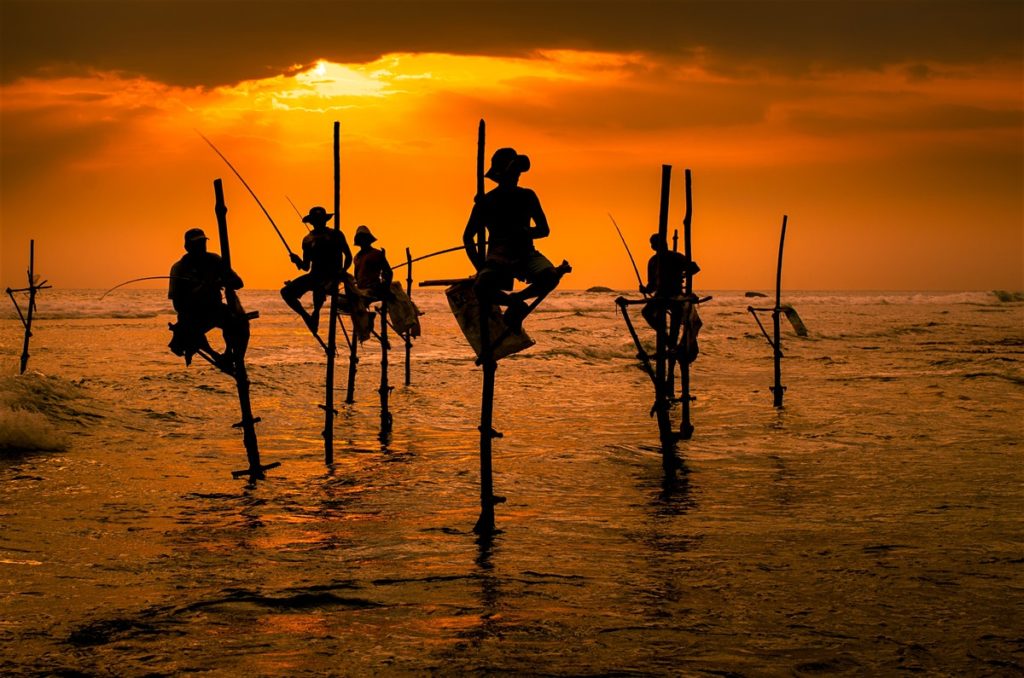
Editor’s Note: This is the first in a periodic series on the effects of the COVID-19 pandemic on tourism providers across the globe.
Back in the late 1960s, when I was still mostly fantasizing about globetrotting, I picked up a paperback book called Bargain Paradises of the World.
Although all the pictures were in black and white and the information inside was perhaps overly colorful, it was the kind of book that got my travel juices flowing.
One particular “paradise” that caught my eye was Ceylon, the tear-drop-shaped Indian Ocean island nation that has been known as Sri Lanka since 1972.
My fantasy Ceylon — which had been colonized by Britain until 1948 and was known in the West mostly for its tea exports — was pictured by Bargain Paradises as an idyllic place where… Continue reading
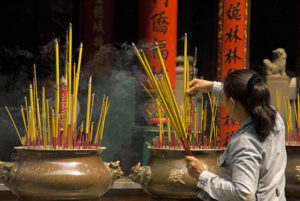
Thien Hau Pagoda Buddhist Temple in Saigon’s Chinatown. Photo by Dennis Cox/WorldViews
In Part I of Robert Waite’s two-part series on traveling to Vietnam, Vietnam Visit Stirs Emotions for Boomers, Bob recounted his recent visits to Hanoi and Halong Bay.
In this post, he travels to Saigon (Ho Chi Minh City) and the remarkable Cu Chi Tunnel complex dug by the Viet Cong outside the city — but much closer to it than you might imagine.
Saigon itself is a bustling city that evokes stark memories of the Vietnam War, but is also now a prime “foodie” destination and a place to drink at a bar made famous by big-name war correspondents:
By Robert Waite
Part II of a two-part series.
Ho Chi Minh City, Vietnam – The thing about name changes is that they often don’t stick. Take Mumbai, for example. The Indian national government decided that “Bombay” was… Continue reading
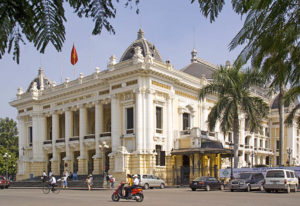
Hanoi’s 1911 Opera House is a prime example of the city’s French colonial architecture. Photo by Dennis Cox/WorldViews
In this post and the next, Contributing Writer Robert Waite recounts his recent journey to Vietnam, the country that helped define a generation of baby boomers.
Forty five years after the fall of Saigon, which effectively ended the more-than-a-decade-long Vietnam War, a visit to Hanoi still stirs emotions, whether you were pro- or anti-war in the 1960s and ’70s.
Yet even as long ago as 1997, when I last visited Vietnam, the majority of Vietnamese — born after the war — seemed to hold few if any grudges against Americans.
Our roving correspondent, himself a baby boomer, delves into the war history but also the sights and experiences that make Vietnam one of the most intriguing countries to visit in Southeast Asia today.
First up are the capital, Hanoi, and beautiful Halong… Continue reading
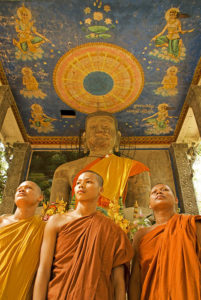
Young Buddhist monks with modern Buddha figure in temple near Bayon Temple. Photo by Dennis Cox/WorldViews
Here’s Part II of contributing writer Robert Waite’s recent journey to Siem Reap, Cambodia — home to the vast ruins of temple Angkor Wat, and much more. (If you missed Part I focusing on Angkor Wat, read it here.)
Here, Bob tours another huge temple complex complete with strangler trees, takes in a surprisingly good local circus, tangles with an oxcart, and takes a boat ride on a lake mostly devoid of water — all recounted with Bob’s deft descriptions and appropriately dry wit.
By Robert Waite
Siem Reap, Cambodia –
You come to Siem Reap for Angkor Wat, but you’d be wise to stay on and take in other area attractions. First and foremost there is Angkor Thom, another huge complex, one that served as the last and most enduring capital… Continue reading
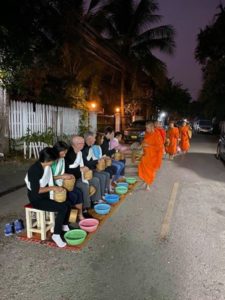
Novice monks arrive to receive alms of sticky rice. Photo by Robert Waite
The country of Laos, along with some other Southeast Asian nations, was on my radar as a possible destination for this year. I was especially interested in taking a river cruise on the Mekong and visiting Luang Prabang.
Alas, it was not to be, but contributing writer Robert Waite did make it there this January, which now seems a lifetime ago. But the portrait he paints is of a “tranquil gem” that I hope will be waiting when safe travel again resumes. And according to Bob, the Laotians are anxious to greet us.
By Robert Waite
Luang Prabang, Laos – It is dark and just a touch chilly. You’re seated on a stool on the road clutching a wicker basket filled with sticky rice, trying to remember the instructions you have just been given. Ball the rice… Continue reading
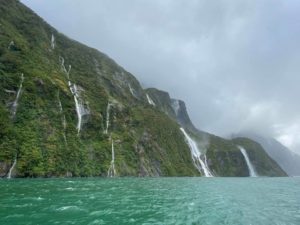
Waterfalls empty into beautiful Milford Sound on New Zealand’s south island. Photo by Jade Chan
Among our far-flung correspondents is Jade Chan, who writes for The Star, an English-language newspaper in Kuala Lumpur, Malaysia.
Jade was on vacation in New Zealand just days and hours before that country — as well as Malaysia and Australia (where she had to transit) — severely limited travel to combat the coronavirus threat. Getting home was something of a trial — “I was ‘saved by the bell,'” as she puts it — but at least she wasn’t stranded for weeks on a cruise ship.
I’ll let Jade take it from here (note that a somewhat different version of this piece originally appeared in The Star).
By Jade Chan
My family had planned for a holiday in New Zealand more than half a year ago, and departed for the Land of the… Continue reading

Time for the pig to squeal. Image from China Travel Guide.
Chinese New Year (also known as Spring Festival), starts on February 5 this year and continues for 15 days.
It’s the most important festival time of the year in China — when millions of Chinese travel to their home villages and cities to be with family or friends for holiday reunions.
One of the world’s most celebrated festivals, Chinese New Year is also a star occasion in Hong Kong, Taiwan, Vietnam, Malaysia, Singapore and some other Asian countries as well as Chinatowns around the world. And in recent years, the celebrations in New York, London, Vancouver, Sydney and other overseas cities have spread out of Chinatowns.
Parades with dragon and lion dances and fireworks, family feasts, and, on the final day, a Lantern Festival illuminated by red lanterns are all traditional.
This is the Year of… Continue reading
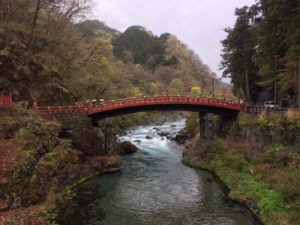
Nikko’s arched Shinkyo Bridge spans the Daiya River.
Last in a Series. Nikko, Japan, is just 72 miles (120 km) and two hours north of Tokyo by train, but seems a world apart.
Situated at an elevation of more than 4,200 feet (about 1,300 meters) and sporting crisp, clean mountain air, Nikko’s central area reminded us of an alpine village, including some chalet-style architecture and a roadside stand dispensing crêpes.
A mountain river tumbles through a gorge and forests fill the mountains. Hot springs, hiking trails, lakes, and waterfalls grace Nikko National Park, which borders the city of 85,000. And UNESCO World Heritage Sites are within walking distance of Nikko’s central square.
Nikko National Park and a World Heritage Shrine
While Nikko is an extremely popular day trip from Tokyo, we stayed overnight and are glad we did. It gave us time to absorb the atmosphere and explore Nikko’s… Continue reading
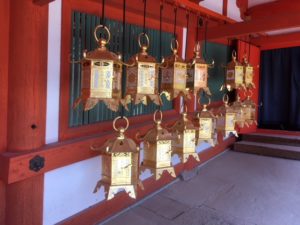
Gold lanterns light the way in one of Nara Park’s many shrines.
Seventh in a Series
Just an hour by train from Kyoto, Nara is a sometimes-overlooked jewel of a city that has played a key role in the historical and cultural life of Japan.
Often visited on day trips from Kyoto — certainly possible if you get an early start — Nara is well worth an overnight stay to keep from being too rushed. We stayed two nights and didn’t regret it, even though we had to change hotels after one night due to a booking error.
If you have more time, Nara is also a convenient base for exploring the surrounding countryside and villages filled with history, hot springs, and, in season, cherry blossoms.
Nara Park and World Heritage Sites
Japan’s first permanent capital during the 8th century AD before the imperial base was moved to Kyoto,… Continue reading










